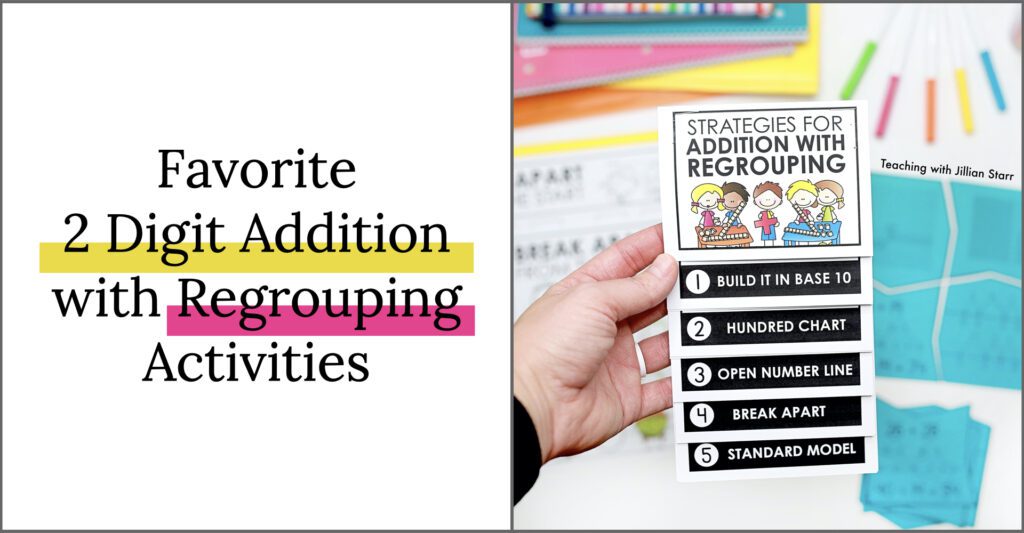
It’s the time of year when you have to move from teaching 2 digit addition to teaching 2 digit addition with regrouping. Cue the collective groan! I know 2 digit addition with regrouping can feel like the insurmountable hurdle of your math curriculum (been there!). That’s why I wanted to share some ways that have helped me break it down into manageable chunks AND some fun 2 digit addition with regrouping activities that will get your students engaged and learning!
Breaking Down 2 Digit Addition with Regrouping
First, it always helps me to break down big learning goals into smaller ones. Our big goal is to have students successfully and efficiently complete 2 digit addition with regrouping. So what prerequisite skills do they need to be able to complete first when it comes to regrouping?
This is how I like to look at the progression of 2-Digit addition with regrouping:
- Teen Number + 1-Digit Number with Regrouping
- 2-Digit Number + 1-Digit Number with Regrouping
- Teen Number + Teen Number with Regrouping
- 2-Digit Number + 2-Digit Number with Regrouping
Teen + 1-Digit with Regrouping
This allows students to start small and begin to see the process of regrouping ones, without having to worry about holding onto multiple other pieces (e.g. additional groups of tens and ones). By beginning with teen numbers and adding a single-digit number, we are letting students experience the regrouping process in isolation.
2-Digit + 1-Digit with Regrouping
Once they are able to understand and internalize the process, we can begin single-digit numbers and 2-digit addition with regrouping. This helps them build upon their foundation of regrouping and experience regrouping with different decades.
Some questions that I like to use with students during this phase include:
- What similarities and differences do you notice between 17 + 6 and 47 + 6?
- Where do you see regrouping happening on the hundred chart?
- What pictures happen in your mind when you’re regrouping?
- If you could rename “regrouping,” what would you call it?
- How could we act out regrouping as a class?

2 Digit Addition and Subtraction with Regrouping Mega Pack
Teen + Teen
Once we’ve experienced the regrouping process through different decades and students feel confident, we are ready to move into teen + teen addition with regrouping. This type of 2 digit addition with regrouping eases them into the world of holding onto multiple groups of ten. Previously, there was only one number that had a value in the tens place. Now there are two, which means that they have to hold onto more information in their working memory.
During this phase, I find it REALLY important to provide students with manipulative supports to help them keep track of two sets of tens and ones. Allowing them a separate space to be building numbers, or activities where building is embedded into the work is a great option (see some below where that is key!)
2-Digit + 2-Digit with Regrouping
We are at the final stage! Now that we have built an understanding of regrouping, have experienced it within different decades, AND have now had some experience with building our working memory to hold onto multiple groups of tens and ones, we are READY!
Again, when taking on this new skill, I like to make sure that my students have ample access to Unifix cubes (or base-ten blocks if you don’t have Unifix cubes). You can read about why I prefer Unifix Cubes to base-ten blocks when teaching 2 digit addition with regrouping HERE.
Now, you might be asking, this is great information, but HOW do I get students practicing these? (And preferably without worksheets and timed tests.)
How to Choose the Best Activities to Teach Regrouping?
There are so many games and activities out there to choose from, so which ones are really the best for teaching these concepts? Let’s look at 5 different aspects of games you can look for to help you with your selection process:
Embedded Visuals and Manipulatives
Something to be on the hunt for are 2 digit addition with regrouping activities where manipulatives and/or visuals are embedded into the activity itself. Each year I have students who either don’t know they would benefit from using manipulatives, AND students who know they would benefit from them, but don’t want to be seen “needing them.”


When we offer activities that require the use of these visuals, it takes away any hesitancy that students might have, and gives them the hands-on practice they may have skipped otherwise.
One of my favorite activities to do this is “Construction Zone Addition.” It’s a super simple activity that asks students to use their regrouping board to complete different problems. Reasons why I love this activity:
- It utilizes the double-ten frame model which helps students visually identify when it’s time to regroup
- There is an embeded visual reminder of how to regroup from tens to ones
- It provides an organized space for students to keep track of multiple sets of tens and ones
- The cards are differeniated so students at four different stages in their understanding of regrouping can play
All of these benefits make this activity a must-have for me!
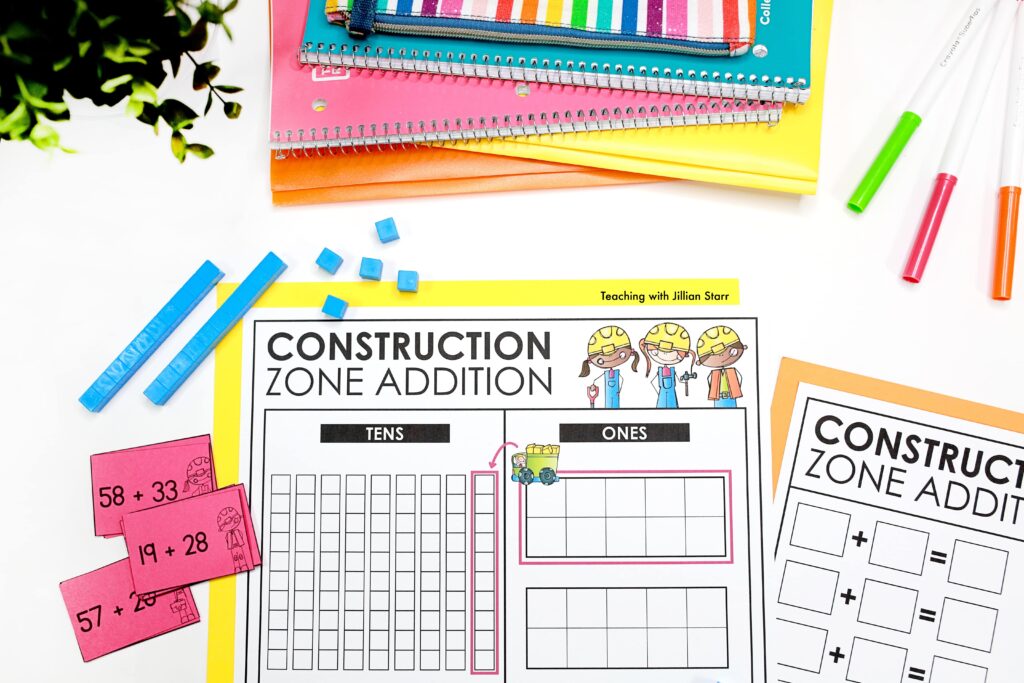

Sort Regrouping vs. Non-Regrouping Problems
One thing that I have found is helpful for students is to teach them to identify problems that will require regrouping prior to solving. I love any game that asks students to focus on the ones place and determine whether that specific problem needs regrouping BEFORE they even attempt it. This game, Don’t Steal My Treasure, is one of my favorites:
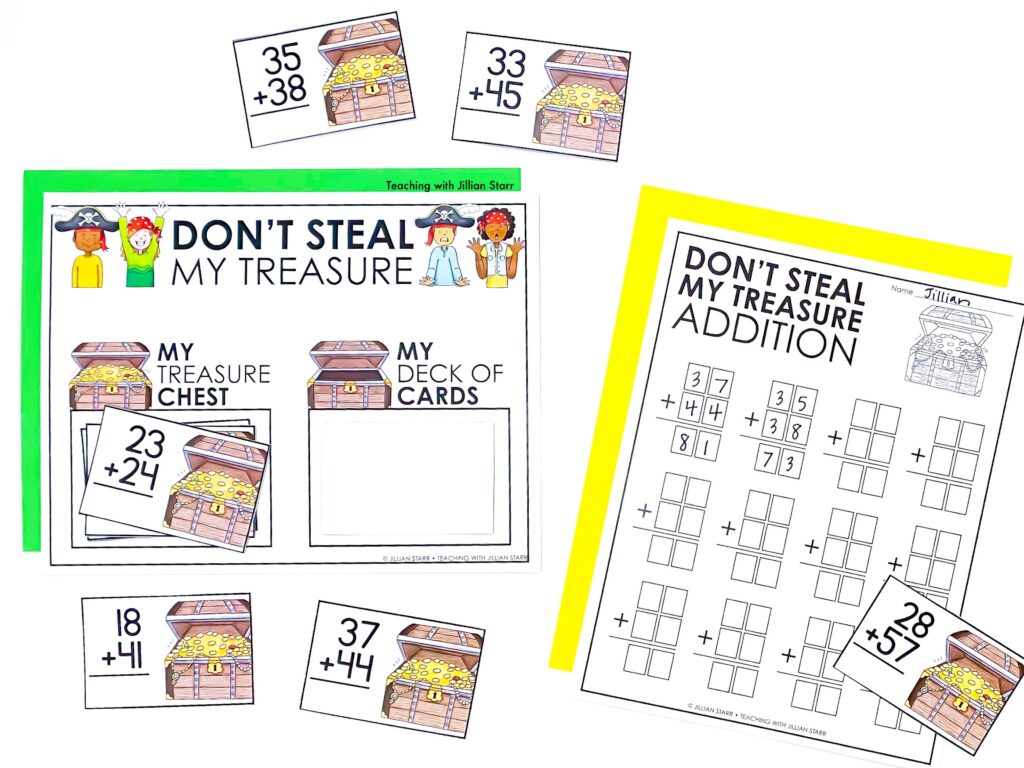

If you played the card game “war” as a kid, you’ll be quick to understand it. Students each have a pile of cards and they each turn over a single card to play. If the first student’s card requires regrouping and the other’s does not, the first student can try to solve their problem to “win” both cards (e.g. the treasure).
If BOTH cards require regrouping or both do not, then each player flips over a second card, and the process repeats, but this time they can take ALL four cards if they solve their problem correctly.
It’s a quick and fun way to get students looking for regrouping, and also encouraging them to solve those problems.
Model a Specific Addition with Regrouping Strategy
While I love allowing students to develop their own strategies for 2 digit addition with regrouping, sometimes I really want to explicitly teach a specific strategy to help them become more efficient with their thinking. Having activities that help encourage explicit practice with a single regrouping strategy will always make the cut for me!
For example, Break Apart from the Start is an activity that requires students to practice decomposing numbers into tens and ones, to then compose each place value separately. This strategy can be really helpful in strengthening students’ mental math, and understanding of place value.
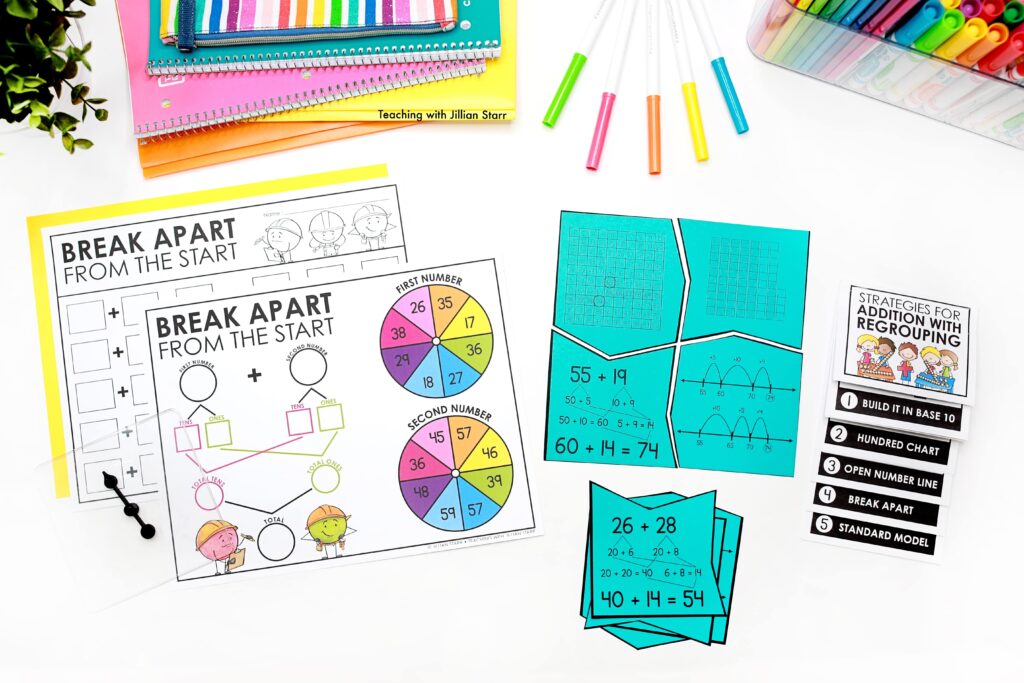

I also made addition strategy math puzzles that show four different ways to solve a single problem! I love how it encourages students to examine the following four ways to solve a 2 digit addition with regrouping problem:
- Hundred Chart
- Building in Base Ten
- Break Apart/Decompose
- Number Line
They’re so much fun and my students LOVE them!




2 Digit Addition and Subtraction with Regrouping Mega Pack
I also like to have resources available to students to help them try out different regrouping strategies. Anchor charts, strategy posters, and these individual student flipbooks are great ways to remind students of different ways to approach 2 digit addition with regrouping.


When students flip open each tab, it gives them step-by-step directions for how to solve a 2 digit addition with regrouping problem! It’s a very helpful (as well as inexpensive and easy-prep) resource for students!
Differentiated Regrouping Games and Activities
Finding Games that can be used at all stages of understanding is such a time saver for teachers AND a confidence booster for students. Why? Well, you only have to teach the game once, but then it can be used over and over as they move through the different benchmarks within your unit.
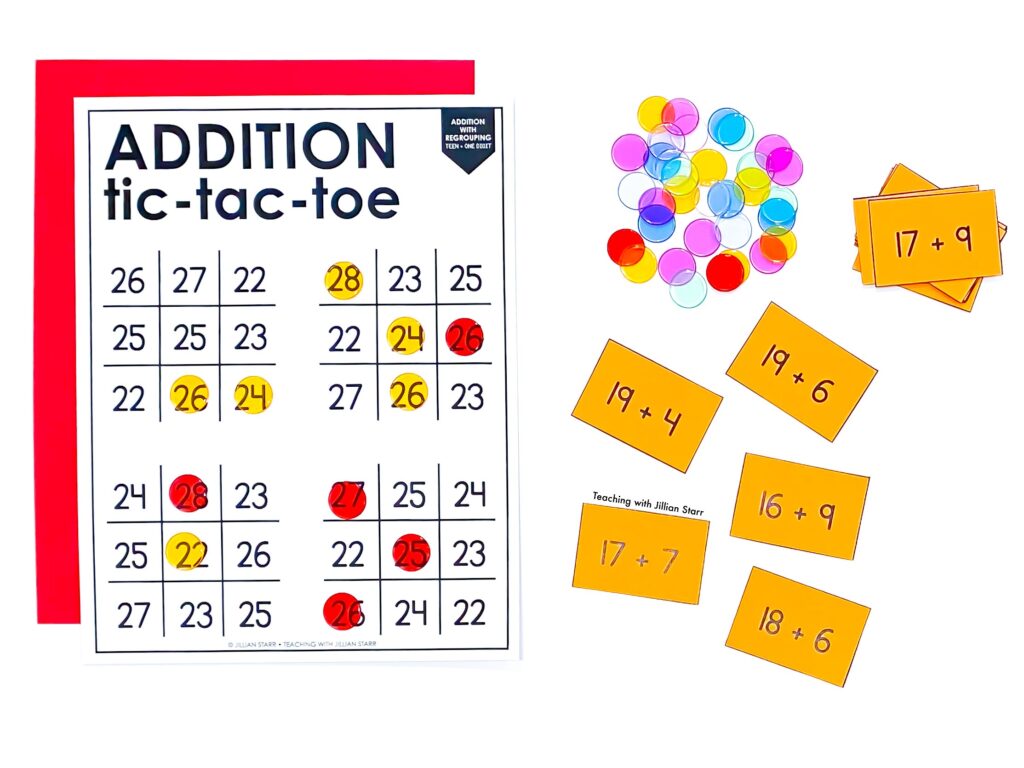

For example, this game of 2 Digit Addition with Regrouping Tic-Tac-Toe can be altered slightly to work at multiple stages:
- Teen + 1-Digit (seen above)
- Teen + Teen (seen below)
- 2-Digit + 2-Digit (seen below)
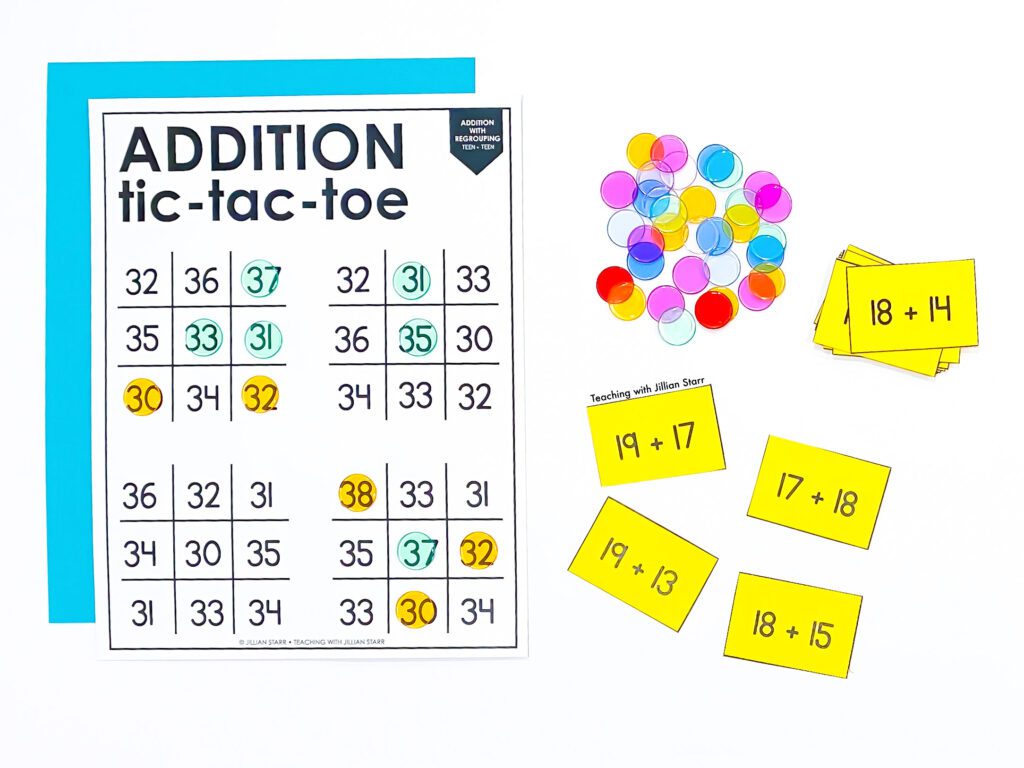

By altering the cards and numbers on the board, the game becomes quickly accessible to ALL students, regardless of where they are in their understanding of 2 digit addition with regrouping. Now all students can play the same game and feel independent and confident in their progress! Talk about a teacher win!
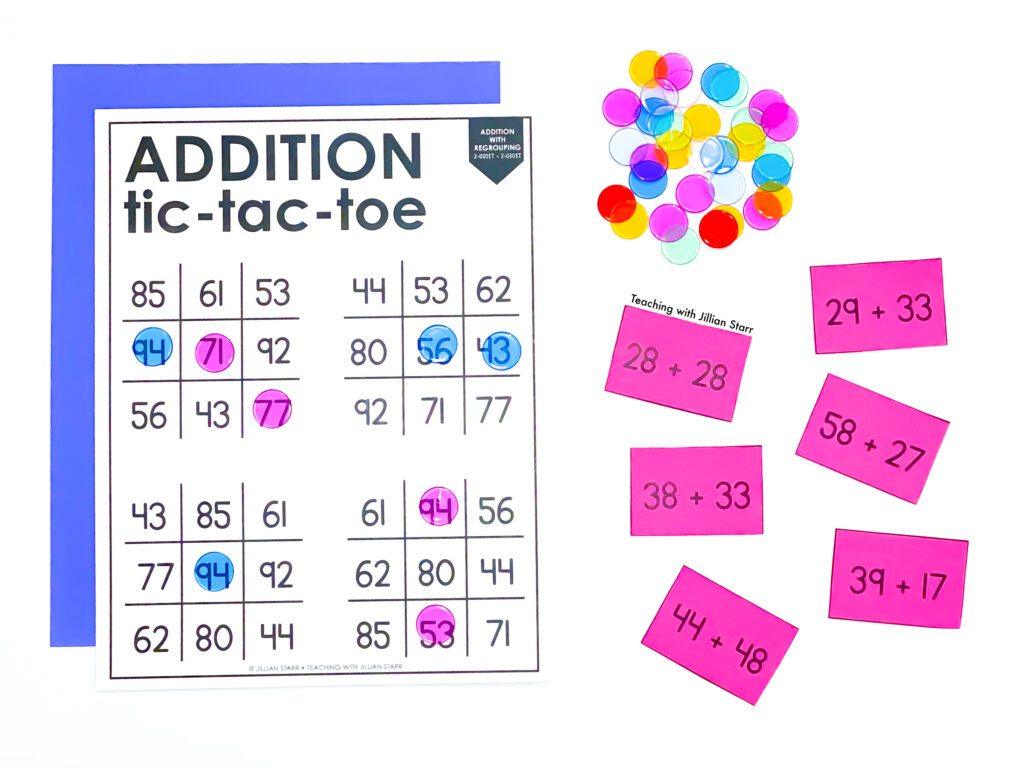

Ask Students to Estimate and Check their Answers
This is an important, but often overlooked skill! Having students estimate their answer to 2 digit with regrouping problems is a great way to support self-checking. Activities like Wait! Let’s Estimate ask students to look at problems and estimate the sum within a range of 10.
This activity encourages students to look at the ones place to determine if it requires regrouping, add the tens together, and then know it will be in the following decade if it requires regrouping.
The best part? Students then select a handful of 2 digit addition problems from each column and check to see if their estimates were correct. Got to love any activity where self-correcting is included!




2 Digit Addition & Subtraction with Regrouping
I hope this breakdown of skills and ideas for how to select activities were helpful! 2 digit addition with regrouping doesn’t have to be a headache! When you allow students to move through the stages at their own pace and build from one stage to the next, it is possible for it to be quite a bit of fun!

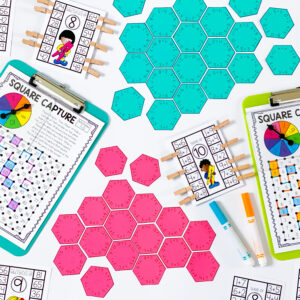

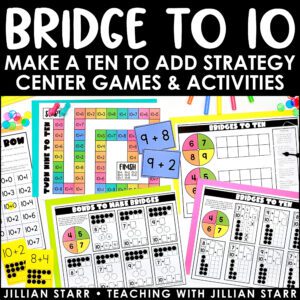
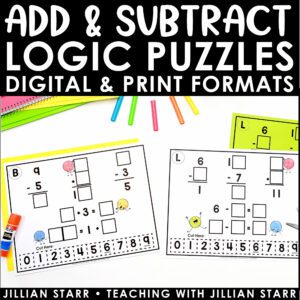
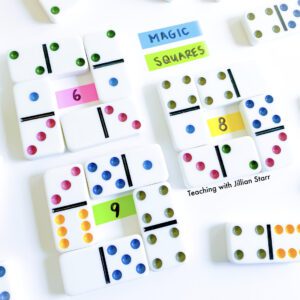
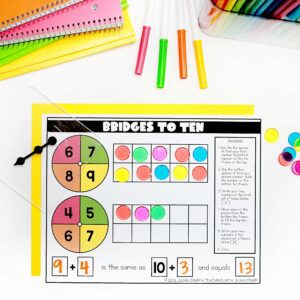
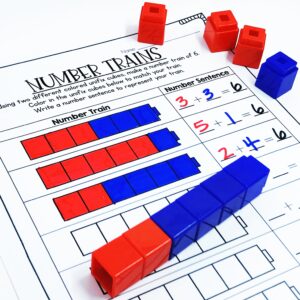


Leave a Comment